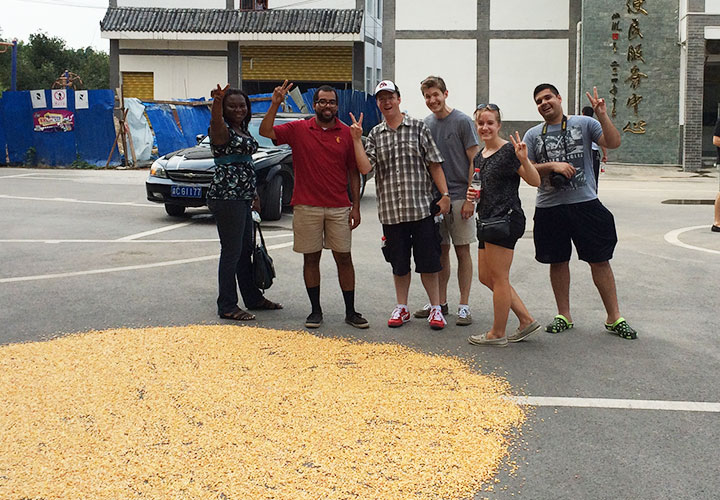
As a Japan Studies student, and one interested in East Asia regional relations, I knew that our time in China was going to be a historically sensitive one. Prime Minister Shinzo Abe made his remarks commemorating the 70th anniversary of the end of World War II the day before I left home, and Beijing’s big parade would occur just a few days after I got back. Being able to observe the atmosphere across three Chinese cities really helped me perceive nuances of this period that I would have missed by watching events unfold through the eyes of American media.
It was impossible to miss the banners that hung over every overpass in Beijing trumpeting the “Commemoration of 70th Anniversary of Victory of Chinese People’s Resistance against Japanese Aggression and World Anti-Fascist War.” Rather bizarrely, these banners were side-by-side with others promoting the main sponsors of the International Association of Athletic Federations, whose world championships were being held in Beijing that same week. Therefore, we saw banners condemning the Japanese aggression 70 years ago just feet away from advertisements for Canon, Seiko, TDK, Tokyo Broadcasting, and Toyota (five of the event’s eight official partners are Japanese firms). Later, in Shanghai, I witnessed a similar situation, with a war commemoration banner juxtaposed with a massive advertisement for ASICS. Clearly, there was room for Chinese nationalism and pride to coexist with a robust Sino-Japanese trade relationship.
One aspect of the run-up to the anniversary that pleasantly surprised me was the effort within China to promote the memory of China and the United States as military allies. In all three cities, we met with people who were quick to point out our countries’ cooperation during the war, and while we were unable to visit the museum to General Joseph Stilwell, I did learn about the man, who is often overlooked in American histories of the war. We were also told about the “Flying Tigers,” an all-volunteer group of American airmen who fought to defend China before our country officially entered the war. The connection to Stilwell, and Chennault’s Flying Tigers was felt especially strong in Chongqing, where the Chinese capital had moved during the darkest days of the war. In Shanghai, I encountered a large display in the People’s Square subway station commemorating the anniversary. Even though the display was entirely in Chinese and clearly meant for a domestic audience, there was a substantial portion dedicated to the Flying Tigers. It was good to see that the focus on the war could be used to contemplate the friendships formed between Chinese and American people, rather than solely emphasize the horrors of war.
Being in China during such a key period is an experience I will never forget. The quality of our meetings and hosts was wonderful, and I am very grateful for the opportunity.
